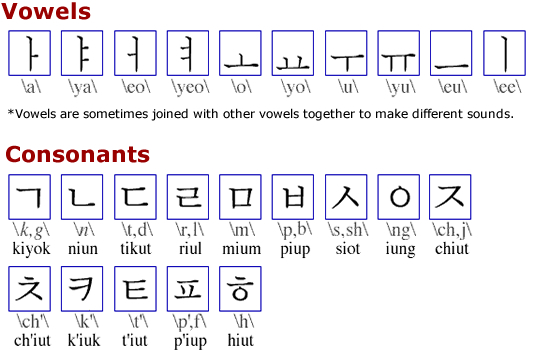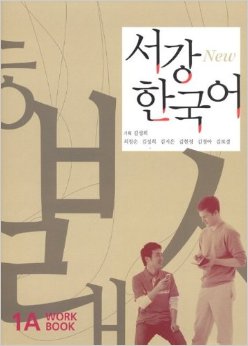This is the book of choice for most Korean courses, when looking at the content of a beginner class the name of Sogang Korean will more than likely appear. They are the product of years of teaching from Sogang University Korean Language Education Centre and they certainly look the part. Altogether there are five levels, which quite intimidatingly are further divided into A and B parts creating 10 books and each book comes with its own workbook. However, anyone willing to take on this challenge has to start from 1A, and this book rather scarily glosses quickly over the alphabet and by page 25 the student is expected to already be able to read Korean.
If you are studying by yourself this might be a bit too much, in order to properly be able to read it is really important to know how each character sounds. Although there is a CD, this can’t make up for hearing a native pronounce the words correctly as well as correct your own pronunciation. As such it is really better to study this book in a class so that you can get the most from the book. The introduction includes a brief explanation of the alphabet and four very short chapters which each cover a little grammar and vocabulary. Following this there are six main chapters. Each chapter introduces new grammar, two to three dialogues with examples using the grammar, and a group activity. Later chapters also include a written text, listening exercises, and a vocabulary list. The workbook complements the student book with comprehensive grammar exercises which also require a lot of vocabulary.

Once you are over the hurdle of being able to read and write Korean the following chapters don’t pose so much of a challenge. Each chapter’s new grammar points are quite clear to understand and the following dialogues really put the grammar into context. Unfortunately the accompanying CD is a different matter. Perhaps the authors were going for a touch of authenticity but one of the speakers speaks too fast and his pronunciation is very unclear; the teacher of my class even pointed out that this is a common complaint from the classes she teaches. As such this is quite a major failing as it pushes beginners too hard to try to understand what is being said and can be quite demotivating. That being said, this textbook has a clear structure which is well thought out and introduces a lot of vocabulary.
"By the last chapter students are expected to be able to talk about themselves, activities, locations, directions and use both present and past tense."
In the first section the first chapter teaches students to introduce themselves as well as the country they are from and their occupation, this leads on to chapter two where the names of objects has to be learnt. However, this starts to become more intense from the first chapter of the second section as a lot more grammar and vocabulary is introduced, it is at this stage that it starts to become difficult to keep up with a class if it covers each chapter too fast. By the last chapter students are expected to be able to talk about themselves, activities, locations, directions and use both present and past tense.
As it is a book compiled from the experience of teachers from a university, unsurprisingly the dialogues follow the lives of young foreign students who have just moved to Korea. While this is perfect for someone living in Korea, for those people trying to study abroad there is a fair amount of material which is quite irrelevant. For example, asking shop assistants if they have a certain product and giving directions around Seoul. Other listening exercises rather irritatingly include attempts to ask out a Korean girl (and be rejected) as well as a university schedule. In general it is very good for people living in Korea or planning to live there, but for other students it might be better to have a textbook more aligned to what they actually need to know or learn. Unfortunately, as stated previously one of the speakers on the CD doesn’t pronounce clearly and this can be quite frustrating.
Both the student book and the work book expect the student to learn to read and write quickly, however the student is assisted by having to do many written exercises. From the point of view of someone who wishes to be able to read and write, in either a group class or as self-study, this is very useful and after just a month of classes I found myself being able to do this rather easily. The grammar can be quite difficult, it is similar to Japanese, and can take time to get used to. There are no explanations of the grammar in English but they are always shown within their context which is very handy.

By the end of the book you would have covered a lot of ground and would be well prepared for being able to do basic things in Korea, the amount of vocabulary is quite considerable and you are able to gain a good grasp of the alphabet for reading and writing. However, as this is just the first of ten books it is a bit discouraging to think that there is still so much to learn, and with ten work books this is a lot to buy. In comparison, one well known series of books for learning Spanish from beginner to advanced level only consists of six books and therefore feels more achievable, as well as affordable. However, this is most likely more due to the complexities of teaching, and learning, an Asian language.





